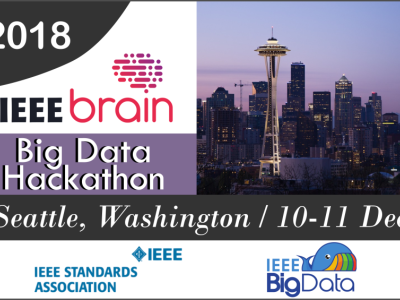IEEE Brain Data Bank Hackathon at the 2018 IEEE Big Data Conference

- Submission Dates:
-
to
- Citation Author(s):
-
J.A. AngueraJ. BoccanfusoJ.L. RintoulO. Al-HashimiF. FarajiJ. JanowichE. KongY. LarraburoC. RolleE. JohnstonA. Gazzaley
- Submitted by:
- Sin-Kuen Hawkins
- Last updated:
- DOI:
- 10.21227/jn60-6546
- Categories:
Abstract
Instructions:
PLEASE SCROLL DOWN AND COMPLETE "APPLY FOR ACCESS" FORM. ONCE PERMISSION IS GRANTED, YOU WILL BE ABLE TO SEE AND DOWNLOAD THE DATASETS.
You can participate either in the Beginners Category or the Advanced Category.
For a hands-on data tutorial, please use the Python Notebook.
After analyzing the datasets, please answer the following questions:
Beginner Challenge Questions
1. Understanding of the NeuroRacer dataset
- Briefly describe the experiment. What did participants do when they were being tested? Why would the same condition (trial) be repeated several times during an experimental session?
2. Clarity and relevance of analysis - state clearly the rationale
- If the goal of the experiment was to improve people's behavioral performance would we expect also expect to see changes in patterns of brain activity? Why or why not?
3. Methodology - clear explanation of process & controlling factors
- Can you visualize an Event Related Response (ERP)? What if you average ERPs by condition? Look for differences in brain signals between individuals, groups, and time point.
4. Interpretation of brain signal data - creative and out-of-box thinking with limitations identified
- What are differences in brain signal data for different frequencies (e.g., alpha, beta, gamma, theta)?
- Are there differences between conditions? What about at different electrode sites?
Advanced Challenge Questions
Given the behavioral finding that NeuroRacer training led to persistent benefits SIX YEARS later, what neural signature shows a similar pattern of effect(s)?
1. Would Deep Learning modeling help with better data analysis? and how?
2. What neural signature at the Six Year Mark show an age-related difference between young and older adults (regardless of training group).
3. How do measures of brain/network activity relate to NeuroRacer performance?
4. Is there an alternative neural signature (other than ERSP or long-range theta coherence) that shows the same pattern of effects as the observed behaviour following training and at the 6 Year mark?
COMPETITION DATASET FILES
- 6 Year EEG NeuroRacer (.bdf files).zip (Size: 9.67 GB)
- 6 Year EEG NeuroRacer (.set files).zip (Size: 9.69 GB)
- 6 Year Follow up BEHAVIORAL data.zip (Size: 1020.4 KB)
- Python Notebook (Size: 301 KB)
- 6 Year EEG NeuroRacer (.csv files).zip (Size: 6.57 GB)
- Simplified BEHAVIORAL Data.zip (Size: 5.34 KB)
- Coherence Data.zip (Size: 18.09 MB)
- Spectral Data.zip (Size: 569.41 KB)
- Sample Data Set.zip (Size: 197.27 MB)


